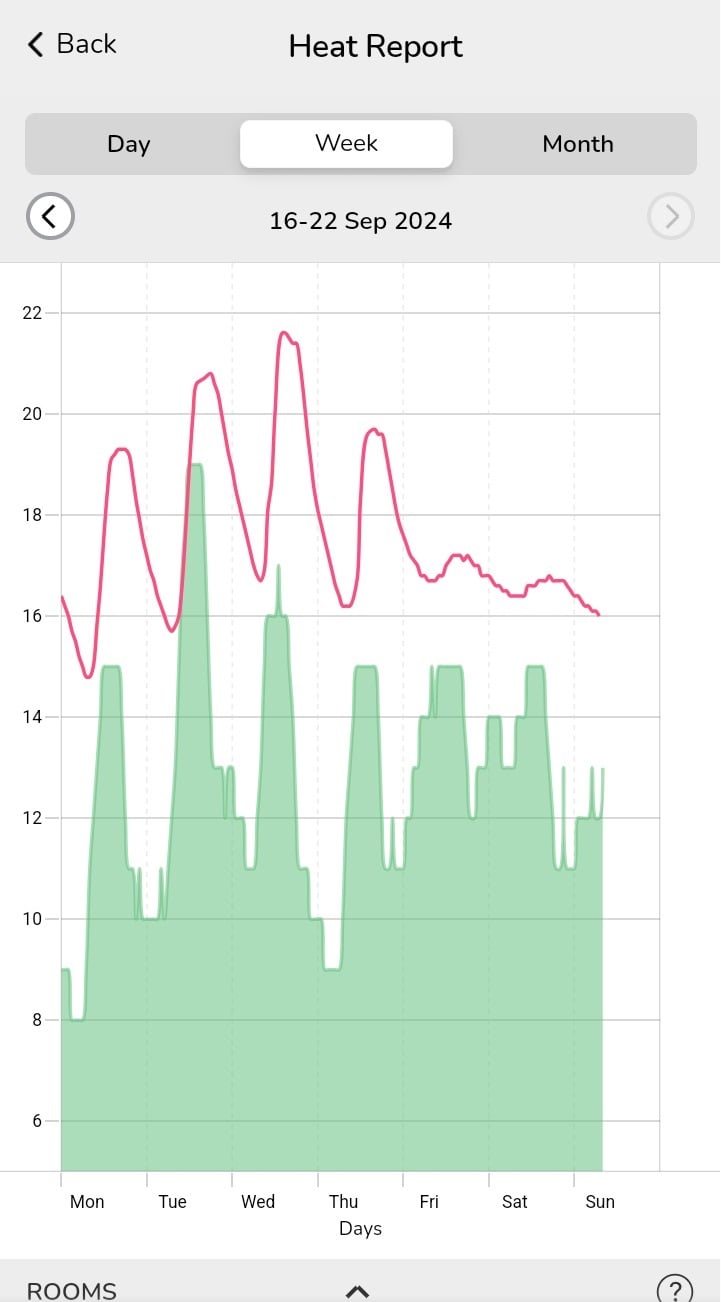We’d like to remind Forumites to please avoid political debate on the Forum.
This is to keep it a safe and useful space for MoneySaving discussions. Threads that are – or become – political in nature may be removed in line with the Forum’s rules. Thank you for your understanding.
📨 Have you signed up to the Forum's new Email Digest yet? Get a selection of trending threads sent straight to your inbox daily, weekly or monthly!
ASHP - Maximising Efficiency
Comments
-
@FreeBear nailed it.FreeBear said:
As the room temperature rises, the ΔT between UFH and room drops. As heat output is a function of ΔT, the amount of heat being put out by the UFH drops. When running very low flow temperatures, the whole system kinda self regulates.nxdmsandkaskdjaqd said:
How do you manage the living room temperature on days when the sun is out with no zoning? Does the living room not get over heated with the sun and UFH?matelodave said: re zoning
The sun heats the room up, the radiator output reduces. The sun shining on a room will always make it feel hotter, it's what you expect and it's natural. You can't really stop it.
Works best at low flow temperatures.
It is how my heating works, radiators are about the right size relative to each other but if a room gets too hot the radiator output drops.
Self regulating, no zones, no trvs and no thermostats.1 -
That's only partial self-regulation, the sun shining on a room may not only make it feel hotter, it may make it actually hotter.
I have a "sun room" which is used mostly as a sort of conservatory for house plants and plants that need to come inside for the winter. It has one radiator with a programmable TRV and the maximum programmed temperature is 12 C. Nevertheless it can get up to 21 C or more on a sunny day in September when it's only 16 C outside. That extra 5 C is entirely due to solar gain. If I had water at 30 C flowing through the radiator in that room then it would get hotter still. But in my case there is no water flowing through that radiator provided the room temperature exceeds 12 C, as it did all this last week.
I can show you the data; shaded is the outside temperature and the line shows the temperature in the sun room as measured by the TRV. This is only heated by the sun and by heat escaping from the adjacent living room but I was away until Friday so there wasn't much of that until then. Monday to Thursday were sunny days, Friday and Saturday very cloudy.
Reed0 -
As said above, If there's a stat in the room that's controlling allthe heating then solar gain will shut the heating down. However if it just controls that zone then the zone will shut down.
However if the room temp is balanced to the flow with weather compensation controlling the system, as the room warms up then solar gain will effectively reduced the heat output from the radiators/underfloor as the DeltaT between the room and emitter decreases.
I found that having a room stat set to the desired room temp to control the zone in our lounge caused the floor to shut off when the sun shines which means that the floor may have cooled right down. Therefore when the sun sets the room temp drops and takes some time to recover due to the slow response of underfloor heating - it may not be as pronounced with radiators.
Setting the stat a couple of degrees above the desired temp means that the floor usually stays warm enough to avoid the sudden dip in temp at sunset as the stat doesn't shut the floor down unless the room really overheats
It took me a couple of years of fiddling with the thermostat to solve this.
Never under estimate the power of stupid people in large numbers0 -
So if you are operating the system i.e. self regulating, no zones, no trvs and no thermostats. How often does the heat pump turn off and on, say for a day in autumn and a cold winter day/night? Any graphs would be good.0
Confirm your email address to Create Threads and Reply

Categories
- All Categories
- 352.8K Banking & Borrowing
- 253.8K Reduce Debt & Boost Income
- 454.6K Spending & Discounts
- 245.8K Work, Benefits & Business
- 601.9K Mortgages, Homes & Bills
- 177.7K Life & Family
- 259.7K Travel & Transport
- 1.5M Hobbies & Leisure
- 16K Discuss & Feedback
- 37.7K Read-Only Boards




